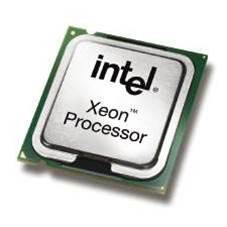
The new chips also mark the final stage of Intel's transition to its Core micro-architecture, which allows for more power efficient chips than the previous NetBurst generation.
Dell, HP and Sun Microsystems showed off four-socket Xeon designs based on Intel's 7300 chipset at a launch event in San Francisco.
IBM demonstrated its forthcoming x4 featuring 16 processors, while Unisys showed off a 32-socket design. Both vendors have to rely on internally developed chipsets, as the Intel chipset is limited to four sockets.
The transition to the Core architecture has allowed Intel to close the gap with AMD in the performance-per-watt metric, allowing it to take back market share from AMD's Opteron.
A four-socket server bundles four physical processors in a single system. Intel and AMD offer different designs for single-processor, dual-processor and multi-processor servers.
As multiple chips are integrated into a system, they require special features to speed up the memory transfer as data is shared between the chips.
Intel has been shipping one-socket and two-socket quad-core chips, and also offered a multi-processor version of its NetBurst dual-core Xeon.
The vast majority of the server market currently comprises two-socket servers which are capable of running most enterprise applications, undercutting demand for four-socket systems.
Shipments of four-socket servers have actually declined over the past few quarters as chipmakers increased the number of cores on their processors.
Because virtualisation allows firms to consolidate multiple applications on a single platform, it offers workloads that justify high performance x86 servers with large amounts of storage and memory.
Intel as well as system builders, however, expect that virtualisation will spawn a renewed interest in multi-processor systems.
"Things like virtualisation are bringing a resurgence into the higher end x86 space," James Mouton, senior vice president for industry standard servers at HP, told www.vnunet.com.
"You can now justify that type of platform because you are getting the workload out of it."
To further support migration of virtual workloads, the chips also feature a new technology dubbed VT FlexMigration Assist.
The technology allows virtualisation software such as VMware ESX Server or Xen to move virtual workloads between physical processors and servers as they are running.
Such technology currently requires that all servers offer the same micro-architecture.
Intel's FlexMigration enables the migration of workloads between the Core micro-architecture as well as future micro-architectures such as those that will be used in Intel's forthcoming 45nm Penryn processors and chips.
Virtualisation software has to add support for the feature. VMware said that it plans to do so around the time that Intel ships Penryn, which is slated for early next year.

_(20).jpg&h=140&w=231&c=1&s=0)


_(22).jpg&h=140&w=231&c=1&s=0)



_(26).jpg&w=100&c=1&s=0)

 iTnews Executive Retreat - Security Leaders Edition
iTnews Executive Retreat - Security Leaders Edition












_(1).jpg&h=140&w=231&c=1&s=0)



